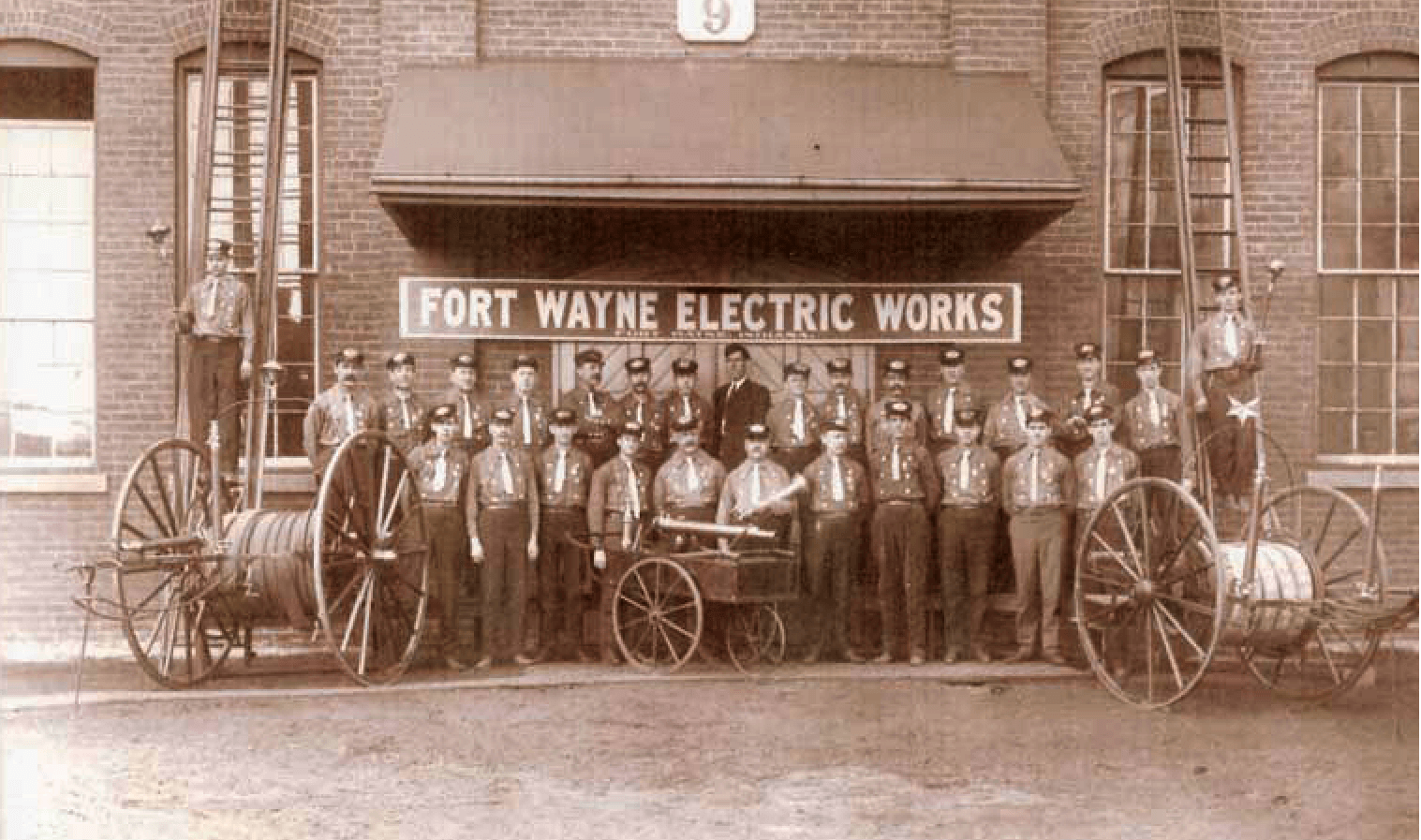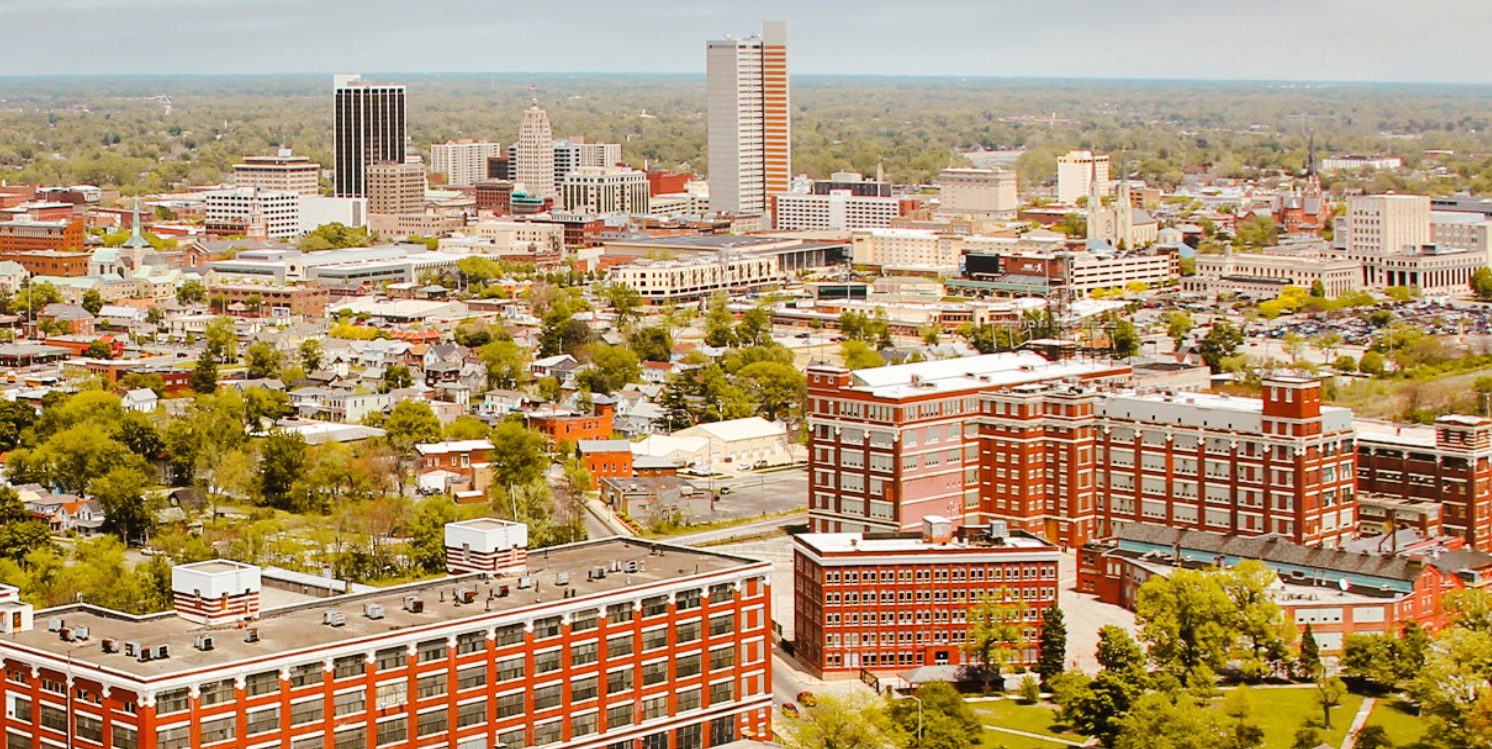
Site History
The Electric Works campus traces its origins to the 1880s with the creation of the Fort Wayne Jenney Electric Company, which commercialized a pioneering electrical outdoor lighting system called the Jenney Arc Light. General Electric acquired the company in 1898 and transitioned production from lighting to electric motor manufacturing. Known for its innovation and production quality, the plant helped create the first modern refrigerator and the electric garbage disposal as well as many other innovations in electric motors and transformers.
At its peak in the late 1940s, GE employed roughly 40% of the city’s workforce. In buildings designed by the renowned architectural firm Harris & Richards of Philadelphia, the campus housed the manufacture of electrical apparatus, notably fractional electrical motors (typically used for electrical appliances) and electrical transformers. Like many of the country’s large-scale industrial sites, the campus became a vital manufacturing facility supporting the war effort during World War II.
Modern transformation of the campus began in 2015 with the sale of the General Electric complex to a consortium of local and national investors called RTM Ventures, LLC. The name “RTM Ventures” honors the memory of Ranald T. MacDonald, the founding president of the Fort Wayne Jenney Electric Company whose entrepreneurial spirit, commitment to innovation, and love of Fort Wayne infuse the rebirth of these magnificent buildings into Electric Works.
To pay for the renovation of these historic buildings into modern facilities, the development team accessed federal, state, local, and private capital. In fact, Electric Works is the country’s largest New Market Tax Credit project, a federal program that directs private investment into underserved areas. Electric Works will stimulate the creation of hundreds of new jobs while creating great new public spaces, including Union Street Market!

DOWNTOWN FORT WAYNE
Downtown Fort Wayne is the center of the fastest-growing metropolitan area within the Great Lakes region, with substantial population growth and more than $1 billion in private investment downtown since 2009 (and that’s not counting Electric Works!). As Indiana’s second-largest city, Fort Wayne acts as a service center and hub for residents throughout Northeast Indiana and western Ohio.
Fort Wayne has been recognized for its rapidly improving food and beverage scene, with multiple downtown farmers’ markets and a growing ecosystem of creative food entrepreneurs. In the words of Food & Wine magazine, “Fort Wayne is becoming flat-out cool.”
Regional Food Economy

Source:
2017 USDA Census of Agriculture
https://www.nass.usda.gov/Publications/AgCensus/2017/index.php
Northeast Indiana is home to a growing regional food system. Rooted in strong Amish and German agricultural heritage, today Northeast Indiana has over 1.8 million acres of farmland and more than 8,000 farms across an 11-county area.* The dominant crops include corn and soybeans for fuels and animal feed, as well as chicken, eggs, and hogs for national and global markets.
To feed area consumers, a subset of about 400 smaller agricultural producers focus on fruits, vegetables, meats, dairy products, and grains that supply local markets. This group of farms, orchards, and processors supplies locally produced food directly to consumers and fresh, local ingredients to hundreds of the region’s chefs, schools, and artisan food entrepreneurs.
Many of these newer, diverse, and immigrant farmers use regenerative and organic practices on their urban and rural farms to produce a broad range of delicious, nutrient-dense ingredients that are used to create both familiar dishes and new flavors from around the globe.
Union Street Market is designed to play an important role in connecting the region’s family farms, local food entrepreneurs, and the community. The merchants at Union Street Market are either growers themselves or source many of their products and ingredients from local farms so they can offer their customers the freshest and most flavorful foods and beverages. By supporting our regional food system, they are helping promote the health, equity, sustainability, and prosperity of communities across Northeast Indiana.
Want to learn more about our regional food system? The Northeast Indiana Local Food Network works to grow and connect our local food economy. Read about their work and explore their Local Food Guide at www.NEIfood.org.
*Northeast Indiana includes Adams, Allen, DeKalb, Huntington, Noble, Steuben, Wabash, Wells, and Whitley counties.